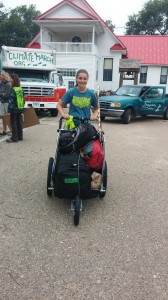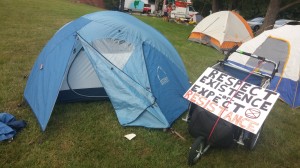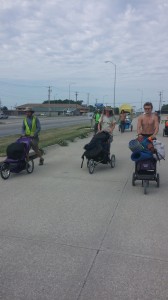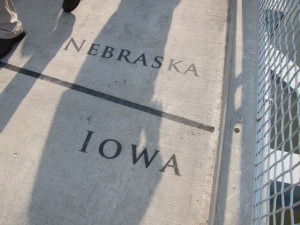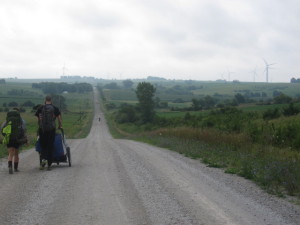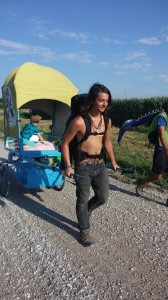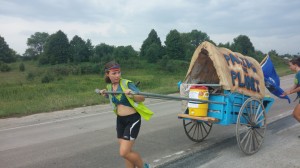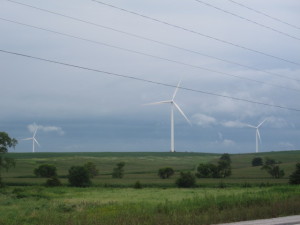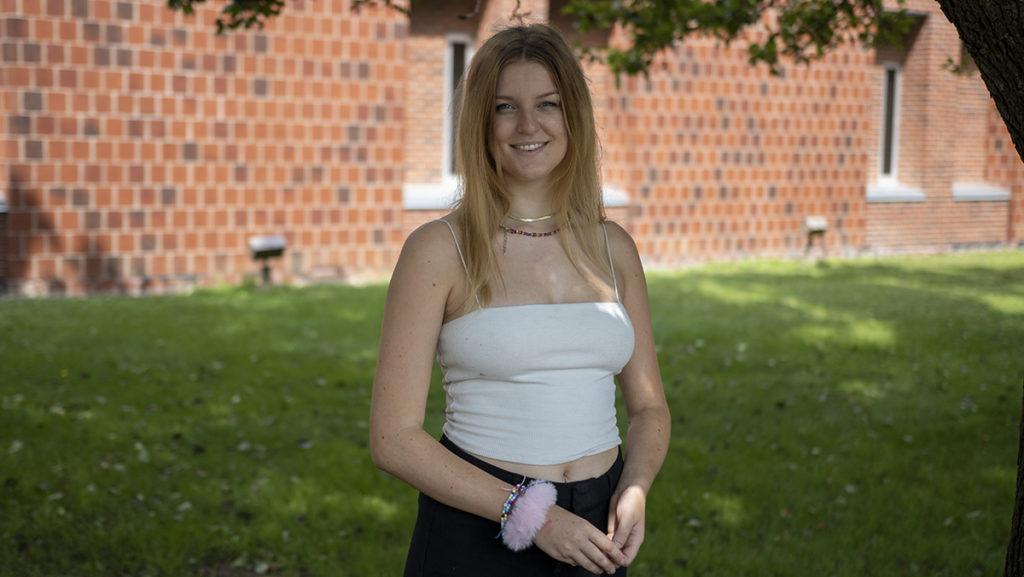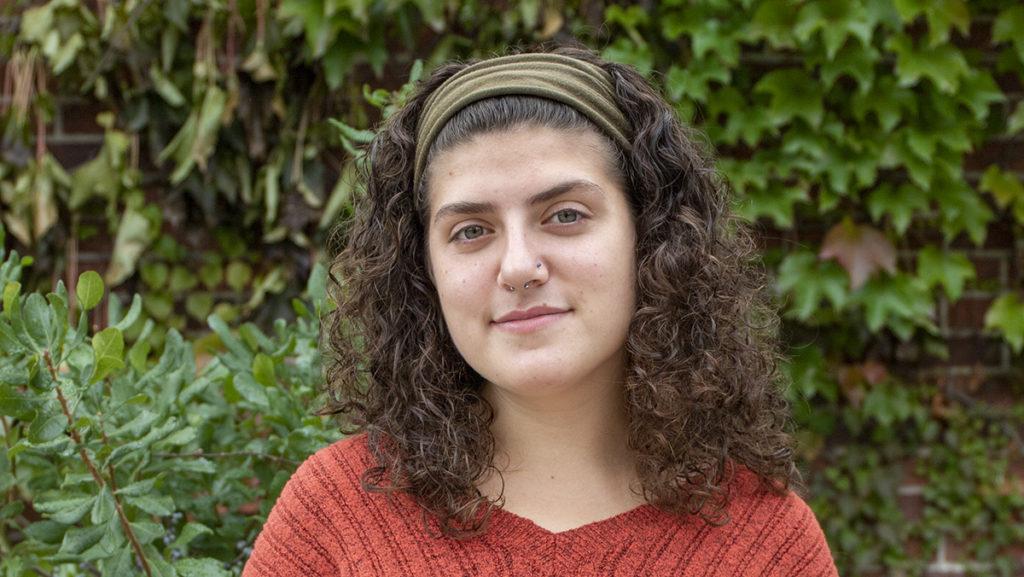A response to the Climate March I hear a lot is, “Isn’t it hypocritical to say you’re walking to fight climate change while you’re using all of those gas-guzzling vehicles?”
Yes, you caught us. The Climate March is not fossil-fuel free. We have a gear truck, a kitchen truck, a truck to haul our Eco-Commodes and several personal vehicles. We rely heavily on these vehicles to make it through our days, and attempts to reduce our number of vehicles are often stymied due to the wide variety of needs from our diverse community.
In response to people being skeptical of the March because of our vehicle use, I’d like to quote two of my fellow Marchers. During one of our emotionally-intense group meetings about our fossil-fuel usage, Jeffrey Czerweic pointed out that it takes fossil fuels to produce wind turbines and solar panels. My fellow marcher Mack McDonald often cites the following statistic: if every single American started living a truly sustainable lifestyle tomorrow, it would only cut about 20 percent of our emissions. The other 80 percent comes from industry and corporations.
It’s true; we need to drastically cut our carbon emissions if we have any hope of even a bearable future on this planet. While it is important to make changes in our own lives, it is even more important to tackle industry, consumerist capitalism and wasteful individualism. Currently, our daily lives and the resources we use and think we ‘need’ encourage this system, and one way we can bring down the giant is to remove our monetary support from it.
That’s why, inspired by my fellow marcher Kelsey Erickson, who has been carrying her own gear in a cart or a backpack for most of the March, I decided to start using a cart in Nebraska and I am still going strong now.
A picture of me using a push cart for the first time in Nebraska. All of my gear is on it.
Although walking across the country is a feat within itself, I wanted to demonstrate to people that I could do it while minimizing my dependence on vehicles. Now that all of my gear is in a cart, I don’t need to rely on the gear truck anymore. In the process of hauling all of my stuff, my body has gotten even stronger than it already was from just walking.
My tent and cart
From left to right Ben Bushwick, Kelsey Erickson and Rob Lister pushing carts on our way into Lincoln, Neb.
Not only does transporting my gear using my own power have an outward impact to those who see the March, but it has also had a significant personal impact for me. I now understand better than I ever have what I am capable of physically. Last semester at Ithaca College, I had a personal car, and although I rarely used it without carpooling, now looking back I realize I probably could have done without it. My time on the Climate March has inspired me to start planning a walking or bicycling trip to college this spring semester rather than driving. I hope to downsize my personal possessions enough that I will not need a car to get it all to campus.
Although some people do mistake me for a homeless person because of my cart, I hope that as I continue to walk across the states with my fellow merry travelers that some of our onlookers and supporters will be inspired to test how much they can do with their own human willpower.
I crossed this bridge into Iowa on July 30th while pushing my cart.

While not all of our community members are willing and able to push carts full of gear, I have received support from many of my fellow Marchers in this endeavor. Sometimes they offer to take the cart off my hands and give me a break. Now, the March also has a covered Conestoga wagon and a rickshaw to pull, and the Marchers take turns pulling them. The wagon and rickshaw are each big enough to haul people, and we often use them to transport the children who are on the March. The use of carts have strengthened our sense of community and personal sacrifice.
Sean Glenn (left) carrying all of her gear in a backpack and John Abbe (right) pushing my cart to give me a break. We are walking through a huge wind farm in Iowa.
Marcher Luke Davis pulling Tilly, 3, in the rickshaw on our way into Lincoln, Neb.
The first time I tried pulling the Conestoga wagon, I pulled it six miles toward our destination in West Branch, Iowa.
It’s going to take a lot more of what you see in the picture above, as well as an entire restructuring of our society, culture and government to have any hope of slowing down climate change. But in the mean time, as I push my cart across the country, I can set an example of what humans are capable of. I can demonstrate how we can be reliant upon our own bodies and capabilities to meet our needs. We can cut our dependence on industry.
I think this sign in front of America’s largest oil refinery in Whiting, Ind. says it all.



